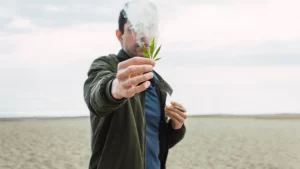|
Getting your Trinity Audio player ready...
|
Opponents of cannabis legalization frequently decry what they call ‘a rapid push‘ toward legalization in America. But to those of us who’ve spent decades fighting to end over a century of marijuana prohibition, these changes cannot come soon enough.

The initial push for cannabis criminalization, which began in earnest more than a century ago, had little to do with public health or safety. Instead, the move to criminally prosecute cannabis users was based primarily upon sensationalism and xenophobia.
For instance, a July 6, 1927 story published in the New York Times, titled “Mexican Family Goes Insane,” claimed: “A widow and her four children have been driven insane by eating the marihuana plant, according to doctors, who say there is no hope of saving the children’s lives and that the mother will be insane for the rest of her life.”
An academic paper entitled “Marijuana,” published in 1933 in The Journal of Law and Criminology, similarly opined about cannabis use: “The inevitable result is insanity, which those familiar with it describe as absolutely incurable, and, without exception ending in death.”
By 1937, Harry J. Anslinger — America’s first “Drug Czar” — had successfully lobbied Congress to ban cannabis using startlingly racist language. “Reefer makes darkies think they’re as good as white men,” he claimed. “There are 100,000 total marijuana smokers in the U.S., and most are Negroes, Hispanics, Filipinos, and entertainers. Their Satanic music, jazz and swing, result from marijuana use.”
Anslinger fretted: “This marijuana causes white women to seek sexual relations with Negroes, entertainers, and any others.”
Decades later, little had changed.
In 1970, Congress and the Nixon administration moved to classify cannabis in the same category as heroin — a wildly inappropriate placement that remains in place today. As in 1937, the decision was entirely political.
As former Nixon domestic policy chief John Ehrlichman later admitted: “We couldn’t make it illegal to be either against the [Vietnam] war or black,” but we could get “the public to associate the hippies with marijuana and blacks with heroin.”
By “criminalizing both heavily,” Ehrlichman explained, “we could disrupt those communities. We could arrest their leaders. raid their homes, break up their meetings, and vilify them night after night on the evening news.”
“Did we know we were lying about the drugs?” he asked. “Of course we did.”
By the 1980s and 1990s, the war on cannabis consumers was in full swing.
Los Angeles Police Chief Daryl F. Gates notoriously told the U.S. Senate that “casual drug users,” like those millions of Americans who responsibly consumed cannabis, “ought to be taken out and shot.” And former House Speaker Newt Gingrich proposed federal legislation to impose the death penalty for those who imported more than two ounces of marijuana into the United States.
At the state level, police made millions of marijuana-related arrests. The overwhelming majority of those arrests were charged with possession only, and a disproportionate percentage were either Black, Brown, or poor.
By 2012, the public had seen and heard enough. That’s when voters in Colorado and Washington decided in favor of citizen-initiated ballot measures legalizing and regulating the adult use, possession, production, and sale of cannabis. In the ensuing years, 20 additional states and the District of Columbia have followed suit, with Delaware doing so just this spring.
None of these states have repealed or even rolled back their laws, and public support for these policies has never been higher. That’s because these policies are largely working as politicians and voters intended and they are preferable to prohibition.
After a century of failed policies and canna-bigotry, Americans are ready to move in a different direction — one that legalizes, regulates, and educates. Such a policy shift is far from “rapid.” It’s long overdue.
This op-ed was originally syndicated by Other Words.





